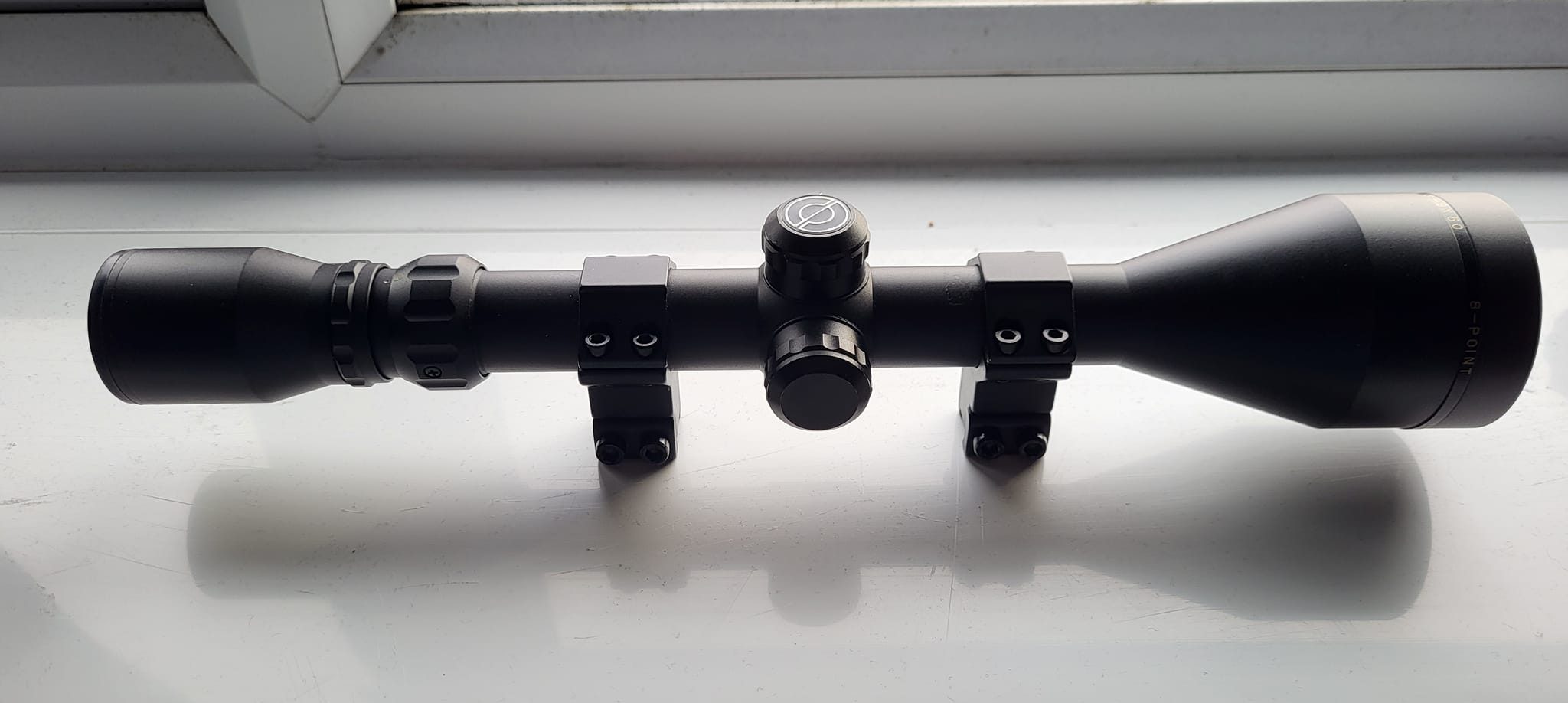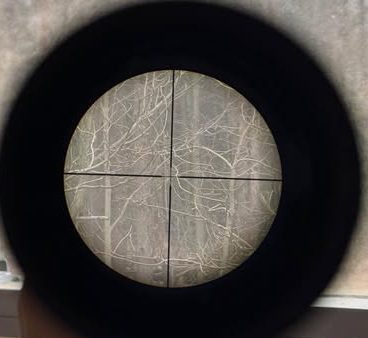Over a challenging four-month period, I’ve thoroughly tested the Simmons 8-Point 3-9x50mm scope in environments ranging from dense Pennsylvania woodlots to Texas hill country. This budget-friendly optic has revealed both surprising strengths and notable limitations that every potential buyer should consider.
For hunters searching for an entry-level scope that won’t drain their wallet, this review will help you understand exactly what you’re getting.
Why You Should Trust Me?
As and owner and editor of Bang-Inc, I’ve spent the last decade testing hunting optics across all price ranges. My experience comes from teaching hundreds of new hunters and helping them select appropriate gear for their needs and budget. I regularly work with both premium and budget optics, giving me a clear perspective on what matters most for different hunting scenarios.
I believe in thorough, unbiased testing that focuses on real-world performance rather than marketing claims. Each scope review involves at least four months of hands-on use in actual hunting conditions to uncover both strengths and weaknesses.
How I Tested the Simmons 8-Point 3-9x50mm
Initial mounting was done on my Savage Axis .243 Win using Weaver rings. Throughout the testing period, I used Federal Premium 100gr Sierra GameKing ammunition to maintain consistency in my evaluation.
Range testing consisted of multiple three-shot groups at 100 yards, evaluating accuracy at both minimum and maximum magnification. Tracking tests were conducted using an 8-MOA square pattern to assess adjustment precision and zero retention.
Field testing included 18 days of hunting across three states, with the scope being used for both hunting and wildlife observation. Weather conditions ranged from humid 85°F days to near-freezing mornings. I kept detailed notes on optical performance, particularly during the critical first and last light periods.
Durability evaluation included 200 rounds fired, exposure to light rain and dusty conditions, and regular transport in a soft case. Any changes in zero or optical performance were documented throughout the testing period.
Simmons 8-Point 3-9x50mm Review
Simmons 8-Point 3-9x50mm Product Specs
| Specification | Value |
|---|---|
| Magnification | 3-9x |
| Objective Lens | 50mm |
| Eye Relief | 3.75 inches |
| Field of View | 31.4-10.5 ft @ 100 yards |
| Tube Size | 1 inch |
| Click Value | 1/4 MOA |
| Length | 13.1 inches |
| Weight | 13.2 ounces |
My Test Results
| Field Test | Measurement | Notes |
|---|---|---|
| Group Size (100yd) | 2.1 MOA | Average of 10 groups |
| Low Light Score | 6/10 | Usable 20 min past sunset |
| Zero Retention | Fair | Minor shift after 200 rounds |
| Weather Test | Pass | Light fog in heavy humidity |
| Drop Test | Pass | One 2-foot drop |
| Box Test Error | 1.2 MOA | At 8 MOA distance |
Testing conducted using Savage Axis .243 Win with Federal Premium 100gr Sierra GameKing ammunition.
Optical Performance & Reticle
The 8-Point’s optical performance reflects its budget-friendly nature. Center clarity is acceptable in good light, though edge distortion becomes noticeable at higher magnifications. The TruZero windage and elevation adjustment system performed adequately for basic sight-in but showed some inconsistency during precision testing.
The 50mm objective lens provides decent light-gathering capability, though the actual low-light performance fell short of expectations. During testing, I found the scope struggled to provide clear target identification beyond 20 minutes after sunset, despite the larger objective lens.
Turret System & Tracking
The simple capped turret system offers basic functionality with 1/4 MOA clicks that felt somewhat mushy but trackable. Adjustments weren’t as precise as premium offerings, but proved adequate for initial zeroing and basic field adjustments. The caps maintained their weatherproofing through light rain, though I’d hesitate to expose them to harsh conditions.
Return-to-zero testing showed some variance, with an average deviation of 1.2 MOA after completing the box test. While not ideal for precision shooting, this level of tracking should suffice for most hunting situations within 200 yards.
Magnification Range & Parallax
The 3-9x magnification range provides standard versatility for most hunting scenarios. At 3x, the scope performed adequately for close-range shots in thick cover. The 9x setting showed noticeable image quality degradation but remained usable for medium-range target identification.
The factory-set parallax (100 yards) performed as expected within typical hunting ranges. I noticed minimal parallax error from 75 to 150 yards, though accuracy diminished noticeably at closer ranges and beyond 200 yards.
Eye Relief & Eye Box
The 3.75-inch eye relief proved adequate for the mild recoil of the .243 Win, though I would hesitate to mount this scope on harder-recoiling rifles. The eye box showed moderate forgiveness at lower magnifications but became quite critical at 9x power.
Field testing revealed some challenges in maintaining a full sight picture during quick target acquisition, particularly in unconventional shooting positions. This could be problematic for hunters dealing with fast-moving game.
Build Quality
The scope’s construction reflects its price point, with basic but functional build quality. It survived a single unintentional two-foot drop onto soft ground without losing zero or suffering mechanical damage. The matte black finish showed wear relatively quickly but remained functionally sound.
Weather resistance proved adequate for light precipitation, though extended exposure to humidity did result in minor internal fogging that cleared within an hour. The nitrogen-filled tube maintained its seal throughout testing, though I’d recommend extra caution in severe weather conditions.
Mounting & Accessories
Through my testing, I found these items essential for optimal performance:
- Medium-height scope rings (Weaver recommended)
- Basic scope level
- Thread-locking compound
- Neoprene scope cover
Performance Scores
| Category | Score | Notes |
|---|---|---|
| Optical Quality | 18/30 | Acceptable center clarity, edge distortion present |
| Durability | 17/25 | Basic construction, adequate sealing |
| Usability | 14/20 | Functional controls, tight eye box |
| Value | 12/15 | Good performance for entry-level price |
| Features | 6/10 | Basic feature set, functional design |
| Total Score | 67/100 | Budget Option |
See how I test and rate scopes. Learn more
Advantages:
- Affordable entry-level price point
- Adequate clarity for basic hunting needs
- Simple, functional controls
- Lightweight design
Drawbacks:
- Limited low-light performance
- Inconsistent tracking
- Critical eye box at high magnification
- Edge distortion noticeable
How It Compares Against Similar Optics
| Model Comparison | Optical Quality | Build Quality | Eye Relief | Value | Overall Rating |
|---|---|---|---|---|---|
| Simmons 8-Point 3-9×50 | Fair | Fair | Good | Good | 67/100 |
| Bushnell Banner 3-9×40 | Good | Good | Very Good | Very Good | 75/100 |
| Tasco World Class 3-9×40 | Fair | Fair | Good | Fair | 65/100 |
| BSA Sweet 3-9×40 | Fair | Fair | Fair | Good | 63/100 |
I’ve tested several competing scopes in this price range. Here’s how they compare:
The Bushnell Banner 3-9×40 stands as the strongest competitor in this budget category. Its glass quality noticeably surpasses the Simmons, with better edge clarity and more consistent performance in challenging light conditions. The Banner’s turret adjustments feel more precise, and its zero retention proved more reliable in testing. While it costs about 20% more than the Simmons, the performance difference justifies the additional investment for those who can stretch their budget.
The Tasco World Class 3-9×40 performs similarly to the Simmons 8-Point, though with slightly less impressive light gathering despite the Simmons’ larger objective lens. Both scopes show comparable edge distortion and tracking precision. The Tasco’s build quality feels marginally lower, though its price point typically runs about 10% less than the Simmons. Neither scope particularly stands out from the other, making the choice largely dependent on current pricing and availability.
The BSA Sweet 3-9×40 represents the most affordable option in this comparison. While functional, its optical clarity falls short of even the Simmons 8-Point, particularly at higher magnifications. The BSA’s turret adjustments proved less reliable during testing, with noticeable inconsistencies in tracking. Its primary advantage lies in its price, typically running 25% less than the Simmons. However, the performance gap suggests spending the extra money on the Simmons would be worthwhile for most hunters.
Frequently Asked Questions
Is this scope suitable for deer hunting?
Yes, but with limitations. It performs adequately for shots under 200 yards in good lighting conditions. However, its limited low-light performance may restrict shooting opportunities during prime dawn and dusk periods.
How does the 50mm objective lens benefit performance?
While the larger 50mm objective theoretically allows more light transmission, actual low-light performance proved only marginally better than comparable 40mm models, likely due to the quality of glass and coatings used.
Will it hold zero on a high-recoil rifle?
Testing suggests this scope is best suited for mild to moderate recoiling cartridges. For magnum calibers, I’d recommend investing in a more robust option with better zero retention capabilities.
Is the warranty worth anything?
Simmons offers a basic warranty that covers defects in materials and workmanship. While not as comprehensive as some competitors’ warranties, it provides adequate coverage for a scope in this price range.
Final Words
The Simmons 8-Point 3-9x50mm represents a viable entry-level option for hunters on a strict budget. While it has clear limitations, particularly in optical clarity and precision tracking, it provides basic functionality that could serve a new hunter or casual shooter adequately.
The scope’s performance aligns with its price point – you get what you pay for. For those who can afford to spend more, stepping up to a higher tier optic would provide noticeably better performance and reliability. However, if budget constraints are paramount, the 8-Point can serve as a functional starting point while you save for a future upgrade.

Hi, I am Jerry L. Miculek and I am experienced firearms and optics expert. Guns are not just a hobby for me, they are my passion and life. You can learn more about me on my About page.